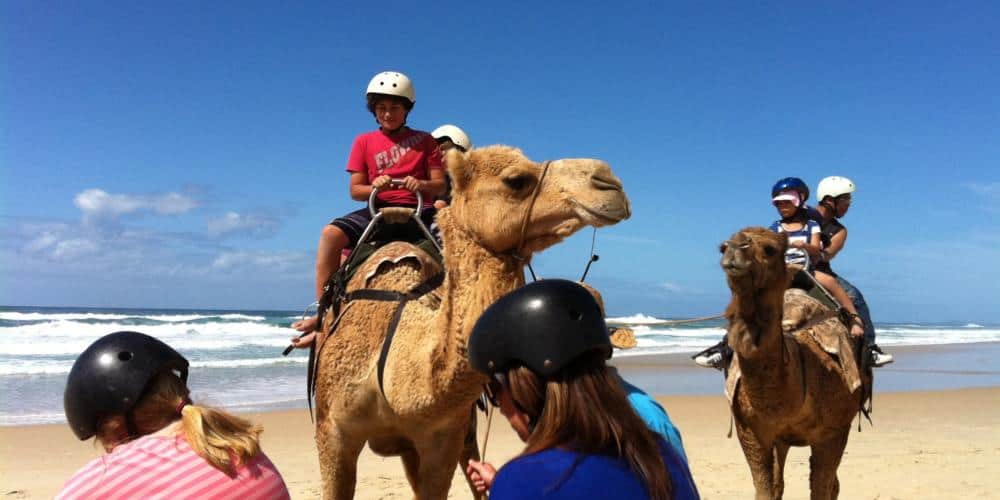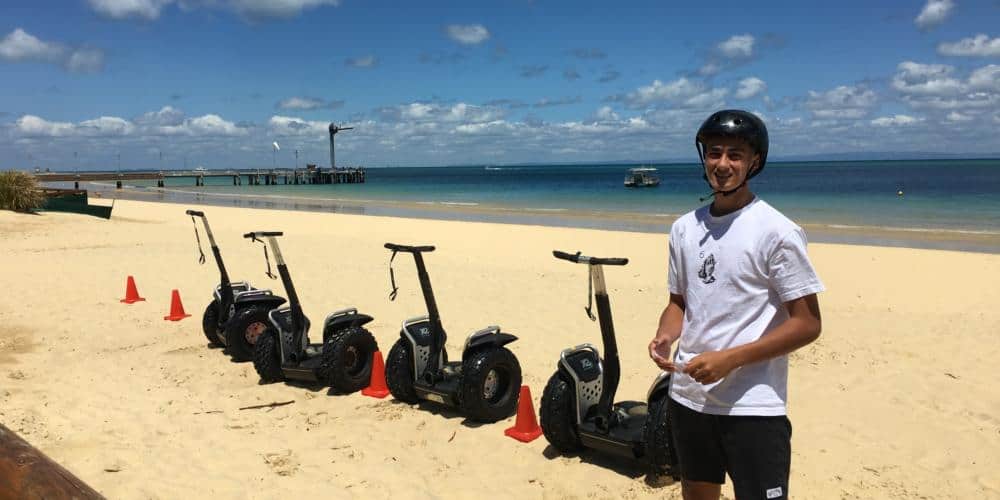Assessing Your Passions and Expertise
Encouragement to reflect on personal interests, experiences, and expertise
Embarking on your journey to find the perfect niche for your travel blog starts with a deep dive into your passions, experiences, and expertise. This is your chance to uncover what sets you apart from other travelers and bloggers and what excites you the most about exploring the world.
Here’s why reflecting on your personal interests and expertise is crucial:
Authenticity: Your passion and enthusiasm for your niche will shine through in your content, making it more engaging and relatable for your audience. When you write about something you genuinely love, it’s not just a job—it’s a joy.
Expertise: Drawing from your own experiences and knowledge allows you to provide valuable insights and practical advice to your readers. Whether it’s sharing insider tips on your favorite destinations or showcasing your unique perspective on a niche topic, your expertise adds depth and credibility to your blog.
So, take some time to reflect on your own travel experiences, hobbies, and areas of expertise. What are you most passionate about? What sets your travel experiences apart from others? What topics could you talk about for hours on end? By tapping into your own passions and expertise, you’ll discover the perfect niche that aligns with who you are and what you love.
Strategies for identifying unique perspectives and insights
Once you’ve identified your passions and expertise, it’s time to uncover your unique perspective and insights that will set your travel blog apart from the rest. Here are some strategies to help you find your voice and stand out in your niche:
Tell Your Story: Your personal experiences and stories are what make your blog unique. Share your adventures, challenges, and triumphs in a way that resonates with your audience and reflects your personality.
Find Your Angle: Look for angles or themes within your niche that haven’t been fully explored yet. Whether it’s eco-friendly travel tips, family-friendly destinations, or cultural immersion experiences, finding your unique angle allows you to carve out a niche within a niche.
Be Authentic: Authenticity is key to building trust and connection with your audience. Don’t try to be someone you’re not or mimic other bloggers. Embrace your quirks, passions, and personality, and let them shine through in your writing.
By embracing your unique perspective and insights, you’ll create content that stands out in a crowded space and resonates deeply with your audience.
Tips for evaluating the feasibility of potential niches based on personal passions and knowledge
While passion is essential, it’s also important to assess the feasibility of potential niches based on factors like market demand, competition, and monetization opportunities. Here are some tips for evaluating the feasibility of your niche ideas:
Market Research: Use online tools like Google Trends, keyword research tools, and social media analytics to gauge the level of interest and demand for your niche. Look for keywords and topics that have a steady search volume and engagement levels.
Competitive Analysis: Research other blogs and influencers in your niche to understand the level of competition and identify gaps or opportunities you can capitalize on. Pay attention to their content, audience engagement, and monetization strategies.
Monetization Potential: Consider the potential for monetizing your niche through affiliate marketing, sponsored content, product sales, or other revenue streams. Evaluate whether there are brands or companies willing to partner with you in your niche and whether your audience is likely to make purchases or bookings related to your niche.
By carefully evaluating the feasibility of potential niches based on your personal passions and knowledge, you can choose a niche that not only aligns with your interests but also offers ample opportunities for growth and success as a travel blogger.
Researching Market Trends and Audience Demand
Introduction to market research techniques for identifying popular niches
Before you set sail on your blogging journey, it’s essential to chart your course with market research. This involves exploring trends, analyzing data, and understanding what travelers are searching for and interested in. By conducting thorough market research, you can identify popular niches with high demand and potential for growth.
Here are some market research techniques to help you identify popular niches:
Industry Reports: Dive into industry reports and studies related to the travel and tourism sector. These reports often provide valuable insights into emerging trends, consumer behavior, and market opportunities that can help you identify lucrative niches.
Social Media Listening: Monitor conversations on social media platforms like Twitter, Instagram, and Facebook to identify trending topics, hashtags, and discussions related to travel. Pay attention to what travelers are talking about, what destinations are popular, and what experiences are in demand.
Online Communities and Forums: Explore online travel communities, forums, and discussion groups to see what questions travelers are asking, what challenges they’re facing, and what topics they’re interested in. Websites like Reddit, TripAdvisor, and Lonely Planet’s Thorn Tree are great places to start.
By keeping your finger on the pulse of the travel industry and listening to what travelers are saying, you can uncover hidden gems and untapped niches that have the potential to attract a dedicated audience.
Guidance on using online tools to analyze keyword trends and search volume
In the digital age, data is your compass for navigating the vast sea of online content. Keyword research tools and analytics platforms can provide valuable insights into search trends, popular topics, and search volume for specific keywords related to travel.
Here’s how to use online tools to analyze keyword trends and search volume:
Google Keyword Planner: Google Keyword Planner is a free tool that allows you to research keywords and see their search volume, competition, and related keywords. Enter relevant travel-related keywords and phrases to discover which topics are popular among searchers.
Google Trends: Google Trends lets you explore the popularity of search terms over time and compare the relative interest in different topics. Enter keywords related to your niche to see how interest has evolved over time and identify seasonal trends or spikes in demand.
SEO Tools: SEO tools like SEMrush, Ahrefs, and Moz offer advanced keyword research capabilities, including keyword difficulty, organic search volume, and related keyword suggestions. Use these tools to identify low-competition keywords with high search volume that you can target in your content.
By leveraging online tools to analyze keyword trends and search volume, you can identify niche topics that are in high demand and optimize your content to attract organic traffic from search engines.
Tips for exploring audience demographics and interests to find a suitable niche
Understanding your audience is essential for finding a suitable niche that resonates with their interests, preferences, and needs. By exploring audience demographics and interests, you can uncover valuable insights that inform your niche selection process.
Here are some tips for exploring audience demographics and interests:
Google Analytics: If you already have a website or blog, use Google Analytics to gather insights into your audience demographics, behavior, and interests. Explore metrics like age, gender, location, and interests to understand who your audience is and what topics they’re interested in.
Social Media Insights: Analyze your social media followers and engagement metrics to gain insights into your audience demographics and interests. Platforms like Facebook Insights, Twitter Analytics, and Instagram Insights provide data on your followers’ demographics, interests, and engagement with your content.
Audience Surveys: Conduct surveys or polls to gather feedback from your audience about their preferences, interests, and pain points. Ask questions about their favorite travel destinations, activities, and types of content they enjoy consuming to identify potential niche opportunities.
By exploring audience demographics and interests, you can identify niche topics that resonate with your target audience and tailor your content to meet their needs and preferences. This not only helps you attract and retain loyal followers but also positions you as a trusted authority in your niche.
Narrowing Down Your Options
Techniques for brainstorming and generating niche ideas
When it comes to finding the perfect niche for your travel blog, creativity is your compass. It’s time to roll up your sleeves, brainstorm ideas, and let your imagination soar. Here are some techniques to help you generate niche ideas:
Mind Mapping: Start with a central theme, such as “Adventure Travel” or “Cultural Exploration,” and branch out into subtopics and specific niches related to your interests and expertise. Write down keywords, phrases, and ideas that come to mind, and see where your brainstorming session takes you.
Personal Experience: Reflect on your own travel experiences, hobbies, and passions for inspiration. Think about the destinations you’ve visited, the activities you’ve enjoyed, and the topics you’re most passionate about. Your personal experiences can often lead to niche ideas that resonate with your audience.
Keyword Research: Use keyword research tools like Google Keyword Planner or SEMrush to explore trending topics, popular keywords, and related search queries in the travel niche. Look for keywords with high search volume and low competition that align with your interests and expertise.
Remember, the goal of brainstorming is to generate a wide range of niche ideas without filtering or judging them. Once you have a list of potential niches, you can move on to the next step of narrowing down your options.
Strategies for narrowing down niche options based on personal preferences and market demand
With a list of potential niche ideas in hand, it’s time to put on your strategist hat and evaluate each option based on a combination of personal preferences and market demand. Here are some strategies for narrowing down your niche options:
Passion vs. Profit: Consider your level of passion and enthusiasm for each niche idea, as well as its potential for profitability. While it’s essential to choose a niche you’re passionate about, it’s also important to assess its market demand and monetization potential.
Competition Analysis: Research other blogs and influencers in each niche to gauge the level of competition and identify gaps or opportunities you can capitalize on. Look for niches with moderate competition and a healthy balance between supply and demand.
Audience Validation: Test the waters by creating test content or conducting surveys to gauge audience interest and engagement with each niche idea. Pay attention to metrics like website traffic, social media engagement, and feedback from your audience to assess the viability of each niche.
Importance of considering long-term sustainability and growth potential when selecting a niche
While it’s tempting to chase the latest trends or jump on bandwagons, it’s essential to consider the long-term sustainability and growth potential of your chosen niche. Here’s why:
Evergreen Appeal: Choose niches with timeless appeal and enduring relevance that are not overly dependent on short-term trends or fads. Niches like budget travel, family travel, and sustainable travel have broad appeal and are likely to remain relevant for years to come.
Diversification Opportunities: Look for niches that offer opportunities for diversification and expansion beyond your initial focus. For example, a niche blog focused on solo female travel could later expand to include topics like solo travel safety, solo travel tips, and solo travel destinations.
Monetization Potential: Consider the potential for monetizing your niche through various revenue streams, including affiliate marketing, sponsored content, product sales, and digital products. Choose niches with multiple monetization opportunities and a proven track record of profitability.
By considering the long-term sustainability and growth potential of your chosen niche, you can future-proof your travel blog and set yourself up for success in the years to come. Remember, finding the right niche is not just about where you start—it’s about where you’re headed and the journey you embark on as a travel blogger.
Testing Your Niche
Discussion on the importance of testing the viability of a niche before fully committing
Before you set sail on your blogging journey, it’s essential to dip your toes in the water and test the viability of your chosen niche. While you may have a strong gut feeling about your niche, testing allows you to gather real-world feedback and insights that can inform your strategy and decision-making process.
Here’s why testing your niche is crucial:
Mitigating Risk: Testing your niche allows you to minimize the risk of investing time, effort, and resources into a niche that may not resonate with your audience or meet your expectations. By testing the waters before fully committing, you can avoid potential pitfalls and make more informed decisions about the direction of your blog.
Validation: Testing provides validation that there is genuine interest and demand for your niche among your target audience. Positive feedback, engagement, and response to your test content serve as indicators that you’re on the right track and that your niche has potential for success.
Iterative Improvement: Testing allows you to iterate and refine your niche based on feedback and data analysis. By continuously testing and optimizing your approach, you can fine-tune your content, messaging, and strategy to better meet the needs and preferences of your audience.
Tips for creating test content and gauging audience response
When it comes to testing your niche, it’s all about experimentation and observation. Here are some tips for creating test content and gauging audience response:
Start Small: Begin by creating a few pieces of test content within your chosen niche to gauge initial interest and engagement. This could include blog posts, videos, social media posts, or email newsletters that showcase your expertise and perspective within your niche.
Promote and Distribute: Share your test content with your existing audience on social media, email newsletters, or your blog to generate initial feedback and engagement. Encourage your audience to share their thoughts, comments, and suggestions to gather valuable insights.
Monitor Metrics: Use analytics tools like Google Analytics, social media insights, and email marketing platforms to track key metrics such as website traffic, engagement, and conversions. Pay attention to metrics like page views, time on page, shares, likes, comments, and click-through rates to gauge audience response.
Seek Feedback: Encourage your audience to provide feedback and constructive criticism on your test content. Create surveys, polls, or feedback forms to gather insights into what resonates with your audience and what could be improved.
Guidance on making adjustments based on feedback and data analysis
Once you’ve collected feedback and data from your test content, it’s time to analyze the results and make informed adjustments to your niche strategy. Here’s how to turn insights into action:
Identify Patterns: Look for patterns, trends, and common themes in the feedback and data you’ve collected. Identify areas of strength and weakness in your niche strategy and content approach.
Iterate and Improve: Use the insights gathered from testing to iterate and improve your niche strategy, content, and messaging. Make adjustments based on audience feedback, preferences, and behavior to better meet their needs and expectations.
Stay Flexible: Keep an open mind and be willing to adapt and pivot based on the feedback and data you receive. The beauty of testing is that it allows you to course-correct and refine your approach over time as you learn more about your audience and niche.
By testing your niche, gathering feedback, and analyzing data, you can refine your approach and set yourself up for long-term success as a travel blogger. Remember, testing is not a one-time event—it’s an ongoing process of experimentation, learning, and adaptation that will ultimately help you find your place in the travel blogging world.
Committing to Your Niche
Importance of committing to a chosen niche for long-term success
Commitment is the anchor that keeps your ship steady amidst the waves of uncertainty. Once you’ve found your niche, it’s essential to commit to it wholeheartedly for long-term success. Here’s why committing to your chosen niche is crucial:
Consistency: Consistency is key to building trust and credibility with your audience. By consistently delivering high-quality content within your niche, you establish yourself as an authority and build a loyal following over time.
Brand Identity: Your niche is the foundation of your brand identity. It’s what sets you apart from other bloggers and defines your unique value proposition. Committing to your niche helps you cultivate a distinct brand identity that resonates with your audience and leaves a lasting impression.
SEO Benefits: Search engines favor websites that specialize in specific topics or niches. By committing to your niche and consistently publishing relevant content, you improve your chances of ranking higher in search engine results for relevant keywords and attracting organic traffic to your blog.
Tips for developing a content strategy tailored to your niche
Crafting a content strategy tailored to your niche is like charting a course for your journey—it requires careful planning, foresight, and attention to detail. Here are some tips for developing a content strategy that aligns with your niche:
Identify Core Topics: Identify the core topics and subtopics within your niche that you want to cover on your blog. Consider the interests and needs of your audience, as well as your own expertise and passions, when choosing topics for your content.
Diversify Content Formats: Experiment with different content formats to keep your audience engaged and cater to different preferences. This could include blog posts, videos, podcasts, infographics, and social media posts that provide valuable insights and information within your niche.
Establish a Posting Schedule: Consistency is key when it comes to publishing content. Establish a posting schedule that works for you and your audience, whether it’s weekly, bi-weekly, or monthly. Stick to your schedule to keep your audience engaged and coming back for more.
Optimize for SEO: Incorporate search engine optimization (SEO) best practices into your content strategy to improve your visibility and reach online. Conduct keyword research, optimize your content for relevant keywords, and focus on creating valuable, informative content that meets the needs of your audience.
Advice on staying motivated and passionate about your niche over time
Staying motivated and passionate about your niche is essential for long-term success as a travel blogger. Here are some tips to help you stay inspired and energized:
Stay Curious: Keep exploring and learning about your niche to stay curious and engaged. Seek out new experiences, destinations, and perspectives that inspire you and fuel your passion for travel.
Connect with Your Audience: Stay connected with your audience and engage with them regularly through comments, emails, and social media. Pay attention to their feedback, questions, and interests to stay informed and inspired by their stories and experiences.
Collaborate and Network: Collaborate with other bloggers, influencers, and brands within your niche to expand your reach and exposure. Networking with like-minded individuals can provide valuable support, inspiration, and opportunities for growth.
Celebrate Milestones: Take time to celebrate your achievements and milestones along the way. Whether it’s reaching a certain number of followers, publishing a milestone blog post, or landing a partnership with a brand, celebrating your successes keeps you motivated and reminds you of how far you’ve come.
By committing to your niche, developing a tailored content strategy, and staying motivated and passionate over time, you set yourself up for long-term success and fulfillment as a travel blogger. Remember, your niche is not just a destination—it’s a journey of exploration, discovery, and growth that evolves with you over time.
Finding the right niche for your travel blog is a journey of self-discovery, experimentation, and commitment. By narrowing down your options, testing your ideas, and developing a tailored content strategy, you set yourself up for long-term success and fulfillment as a travel blogger. Remember to stay true to your passions, engage with your audience, and stay flexible as you navigate the ever-changing landscape of the travel industry. With dedication, perseverance, and a bit of creativity, you can carve out your own corner of the travel blogging world and inspire others to explore the wonders of the world through your unique perspective. So, embark on this journey with confidence, knowing that your niche is not just a focus—it’s the compass that guides you on your blogging adventure.
Additional Resources
Reading Materials
- “How to Start a Travel Blog and Make Money” by Nomadic Matt: Offers advice on finding your niche and turning your travel blog into a business.
- “The Travel Blogger’s Handbook” by Michael Turtle: A comprehensive guide that includes sections on niche selection and blog growth.
- “Blogging from Paradise: How to Find Your Blogging Voice” by Ryan Biddulph: Provides insights on discovering your unique voice and niche in the travel blogging world.
- “The Successful Travel Blogger’s Guide” by Darren Rowse: Includes strategies for identifying profitable niches and building a travel blog.
- “How to Blog for Profit Without Selling Your Soul” by Ruth Soukup: Though not specific to travel, it offers valuable tips on niche selection and monetization.
Online Articles
- “How to Choose Your Travel Blog Niche” by Wanderlust Movement: Detailed guide on identifying a travel blog niche that suits you.
- “Finding Your Niche in the Travel Blogging World” by Nomadic Matt: Insightful article on why a niche is important and how to find yours.
- “The Ultimate Guide to Choosing a Niche for Your Blog” by Blogging Explorer: Offers a step-by-step approach to niche selection applicable to travel blogs.
Tools
- Google Trends: Identify trending topics in the travel industry and assess their popularity over time.
- SEMrush: Conduct keyword research and competitor analysis to find gaps in the travel blogging market.
- BuzzSumo: Discover popular travel content and analyze what works well within specific niches.
- AnswerThePublic: Find common questions and search queries related to travel to help identify potential niches.
- Ubersuggest: Keyword research tool to find popular search terms and content ideas within the travel sector.
Platforms
- WordPress: Popular blogging platform with extensive customization options for travel blogs.
- Wix: Easy-to-use website builder with templates specifically for travel blogs.
- Blogger: Google’s free blogging platform, suitable for beginners starting a travel blog.
- Medium: Platform to publish travel stories and connect with a wide audience without needing your own website.
- Squarespace: Website builder known for its sleek design templates, ideal for showcasing travel content.
Websites and Communities
- Travel Blog Success: Offers courses and a community for aspiring travel bloggers.
- Travel Bloggers Exchange (TBEX): Conference and online community for travel bloggers to network and learn.
- Nomadic Matt’s Superstar Blogging: Training program and community for travel bloggers, covering niche selection and more.
- Pinterest: Source of inspiration and trends in travel blogging niches.
- Website Designer: Get help creating your travel blog/website
- Facebook Groups:
- The Business of Blogging and Social Media: Community of bloggers sharing tips and advice.
- Travel Blog Community: Group where travel bloggers can network and discuss niche ideas.
 ***
***
Ivana Katz is a Sydney based website designer and travel blogger. Having her own business has given her the freedom to explore the world. She believes travel is the best teacher and her passion for adventure, writing and photography has taken her and her son to some amazing places, including Hawaii, Canada, Fiji, Greece and Czech Republic. Ivana’s favourite thing about travelling is learning, discovering hidden gems and creating memories. She loves nothing more than inspiring other women to chase their dreams and explore the world with their families and friends.
Frequently Asked Questions
What is a niche in the context of travel blogging?
A niche in travel blogging refers to a specific topic, theme, or focus area that sets your blog apart from others. It could be anything from budget travel tips to luxury destinations, solo female travel to family-friendly adventures.
Why is finding a niche important for a travel blog?
Finding a niche is crucial for a travel blog because it helps you stand out in a crowded market, attract a targeted audience, and establish yourself as an authority in a specific area of travel. It also makes it easier to create content that resonates with your audience and differentiate yourself from competitors.
How do I choose the right niche for my travel blog?
To choose the right niche for your travel blog, start by assessing your passions, interests, and expertise. Consider what topics you’re most passionate about and what unique perspective or insights you can offer. Research market trends, audience demand, and competition to identify niche opportunities with growth potential.
Can I change my niche later if I’m not happy with my initial choice?
Yes, you can change your niche later if you’re not happy with your initial choice. However, it’s important to consider the potential impact on your audience, branding, and search engine rankings. Before making a change, assess the reasons why you want to switch niches and whether it aligns with your long-term goals and audience interests.
How can I test the viability of my chosen niche?
You can test the viability of your chosen niche by creating test content, engaging with your audience, and analyzing data and feedback. Share test content on your blog and social media channels, monitor audience response and engagement metrics, and solicit feedback through surveys or polls to gauge interest and validate your niche idea.
What are some common mistakes to avoid when choosing a niche for my travel blog?
Some common mistakes to avoid when choosing a niche for your travel blog include selecting a niche solely based on its popularity without considering your own interests and expertise, targeting a niche that is too broad or too narrow, and failing to research market demand and competition.
How can I monetize my travel blog within my chosen niche?
You can monetize your travel blog within your chosen niche through various revenue streams, including affiliate marketing, sponsored content, advertising, digital products, and services. Focus on creating valuable, high-quality content that resonates with your audience and attracts potential partners and advertisers within your niche.
What are some examples of successful travel bloggers who have found their niche?
Examples of successful travel bloggers who have found their niche include Nomadic Matt (budget travel), Adventurous Kate (solo female travel), The Points Guy (travel hacking and credit card rewards), and Legal Nomads (food and travel).
Should I focus on evergreen content or trending topics within my niche?
It’s essential to strike a balance between evergreen content and trending topics within your niche. Evergreen content provides long-term value and can attract consistent traffic over time, while trending topics allow you to capitalize on current events and seasonal trends to attract attention and engagement.
How often should I publish content within my niche?
The frequency of content publication depends on your niche, audience preferences, and available resources. Some bloggers publish content daily, while others post weekly or bi-weekly. The key is to maintain consistency and quality in your content to keep your audience engaged and coming back for more.
How can I differentiate myself from other bloggers within my niche?
You can differentiate yourself from other bloggers within your niche by showcasing your unique perspective, personality, and expertise, providing valuable insights and information that others don’t offer, and engaging authentically with your audience to build a strong connection and community around your blog.
Should I focus on SEO (search engine optimization) within my niche?
Yes, focusing on SEO within your niche is essential for improving your blog’s visibility and attracting organic traffic from search engines. Conduct keyword research, optimize your content for relevant keywords, and follow best practices for on-page and off-page SEO to improve your chances of ranking higher in search engine results.
What should I do if I’m struggling to find my niche or feeling overwhelmed?
If you’re struggling to find your niche or feeling overwhelmed, take a step back and give yourself permission to explore different topics and ideas. Experiment with different niches, test out new content formats, and seek feedback from your audience to see what resonates. Remember that finding your niche is a journey, and it’s okay to take your time to discover what works best for you and your audience.




















